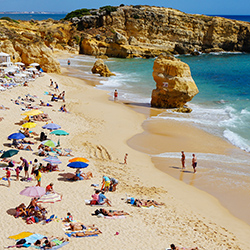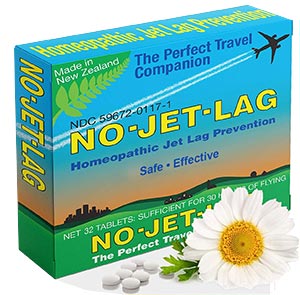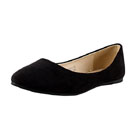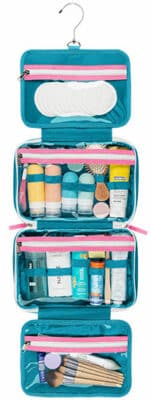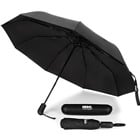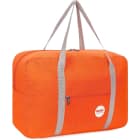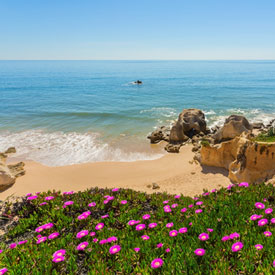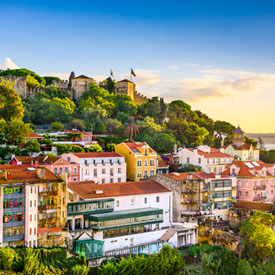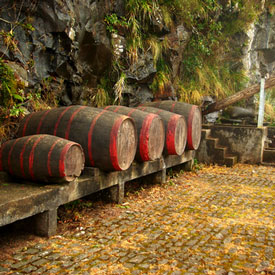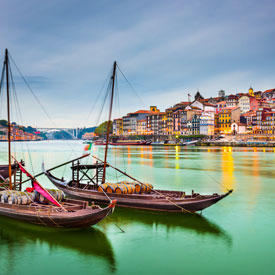Men should plan on dressing casually but put-together in Portuguese cities. Khaki pants, fitted t-shirts, and comfortable sneakers are good options. Bring a few nice button-downs for nights out, like bar crawling in downtown Lisbon. It will be worthwhile to bring some versatile and stylish beachwear for the coast, like a range of shirts, shorts, polos, and swimwear. A light travel jacket with multiple pockets will also serve you well! Bring comfortable walking shoes or sandals, and definitely sunglasses.
Portugal is known for its mild weather – it’s one of the best parts of visiting the country. You’ll still need to plan varying wardrobes for different seasons, though. A wet winter and a dry summer are what you can expect from this country’s Mediterranean climate – take a look at the seasonal guide below to better prepare for your trip to Portugal.
SPRING – March, April, May:
Rainy weather dries up quickly, and you’ll notice that sunny days are more and more common as the season progresses. Spring in Portugal is gorgeous and calm, though you’ll feel it get chilly quickly after sunset.
Late spring can bring beach days, but it won’t yet bring the kind of heat that will make you need a dip in the water just to cool off.
Spring is one of the two shoulder seasons, with summer being the high season for tourism and fall the second shoulder season.
With warming but not yet hot weather in mind, pack layers! Bring sunglasses and a sunhat for those brighter days, and a scarf or shawl for the days when a chill is more prevalent. A rain jacket is a wise idea no matter when you visit, as rain can crop up on you unexpectedly. Remember your attractive but comfortable shoes – fashion is big in Portugal and you’ll be doing a lot of walking. Temperatures average between 60°F and 70°F (16°C to 21°C) with earlier months being the coldest and wettest.
SUMMER – June, July, August:
Warm, pleasant breezes and dry, long days characterize Portuguese summers.
Coasts enjoy more breezes than the inner areas, but the whole country soaks in the comfortable weather during the summer months.
Beach days can be counted on, as can dense crowds of tourists seeking fun in the sun! Plan for lines and higher prices, as this is the tourist high season.
When packing for summer in Portugal, bring light layers (linen pants are ideal here – one of our staffers wears these ones religiously) and plenty of sunscreen. Sunglasses, a sunhat, and your favorite swimsuit are must-haves. Don’t forget your cute swimsuit cover-up for when you’re lounging by the water! Temperatures average between 70°F and 80°F (21°C to 27°C).
FALL – September, October, November:
Summer fades slowly into fall in Portugal.
Most of the time September and October take their time cooling off, though you’ll notice a much faster temperature drop in the evenings, so be prepared with a scarf or shawl when going out.
The later into fall you get, the more rainy days you’ll have. By the end of fall, a little more than half of the days per month will be rainy, so bring your windproof umbrella and rain jacket!
You’ll also do well to bring some stylish boots for walking in case it’s wet out. Temperatures average between 60°F and 70°F (16°C to 21°C) with earlier months feeling more like an extended but cooler summer. Later months cool quickly.
WINTER – December, January, February:
Portuguese winters are WET. On average, just over half of the days per month are rainy in this season.
It’s chilly when the winds blow, but temperatures are certainly not frigid. Nighttime temperatures can be fairly cold, though, so be sure to pack a light jacket or fleece.
Winter is still enjoyable here, and the off-season prices and lack of lines are hard to beat!
You will, without a doubt, need your rain jacket and a windproof umbrella. I’d also recommend bringing a comfortable and stylish pair of boots for walking to help keep your feet and pants dry. A scarf and/or shawl would be a good idea, as it is a stylish layer to keep you warm and it’s very easy to carry with you when you’re not wearing it. Temperatures average between 50°F and 60°F (10°C to 16°C) with a lot of rain and fair winds.




